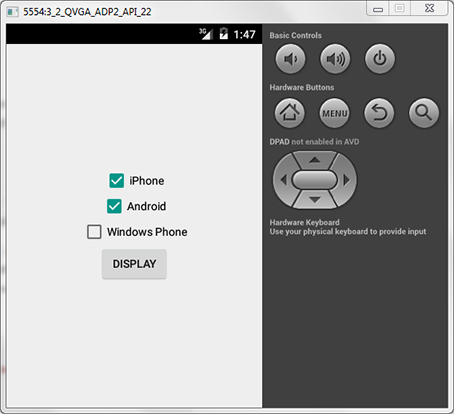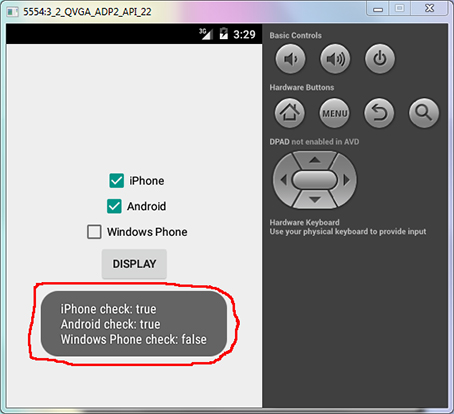
|
Selecting iPhone & Android and pushing DISPLAY ⇒ |

|
Checkboxes allow the user to select one or more options from a set. To create each checkbox option, create a
Checkbox in your layout.
Because a set of checkbox options allows the user to select multiple items, each checkbox is managed separately and you must register a click listener for each one.
Responding to Click Events
However, this example uses another approach. When the user selects a checkbox, the
CheckBox object receives an on-click event.
To define the click event handler for a checkbox, add the android:onClick attribute to the CheckBox element in your XML layout.
The value for this attribute must be the name of the method you want to call in response to a click event.
The activity hosting the layout must then implement the corresponding method.
However, this example uses another approach.
|
|
<?xml version="1.0" encoding="utf-8"?>
<manifest
xmlns:android = "http://schemas.android.com/apk/res/android"
package = "com.example.wenchen.myapplication">
<application
android:icon = "@mipmap/ic_launcher"
android:label = "Checkboxes"
android:theme = "@style/AppTheme">
<activity
android:name = ".MainActivity"
android:label = "@string/app_name">
<intent-filter>
<action android:name = "android.intent.action.MAIN" />
<category android:name = "android.intent.category.LAUNCHER" />
</intent-filter>
</activity>
</application>
</manifest>
|
|
Legally you can argue that it’s all according to Hoyle (according to plan or the rules). |